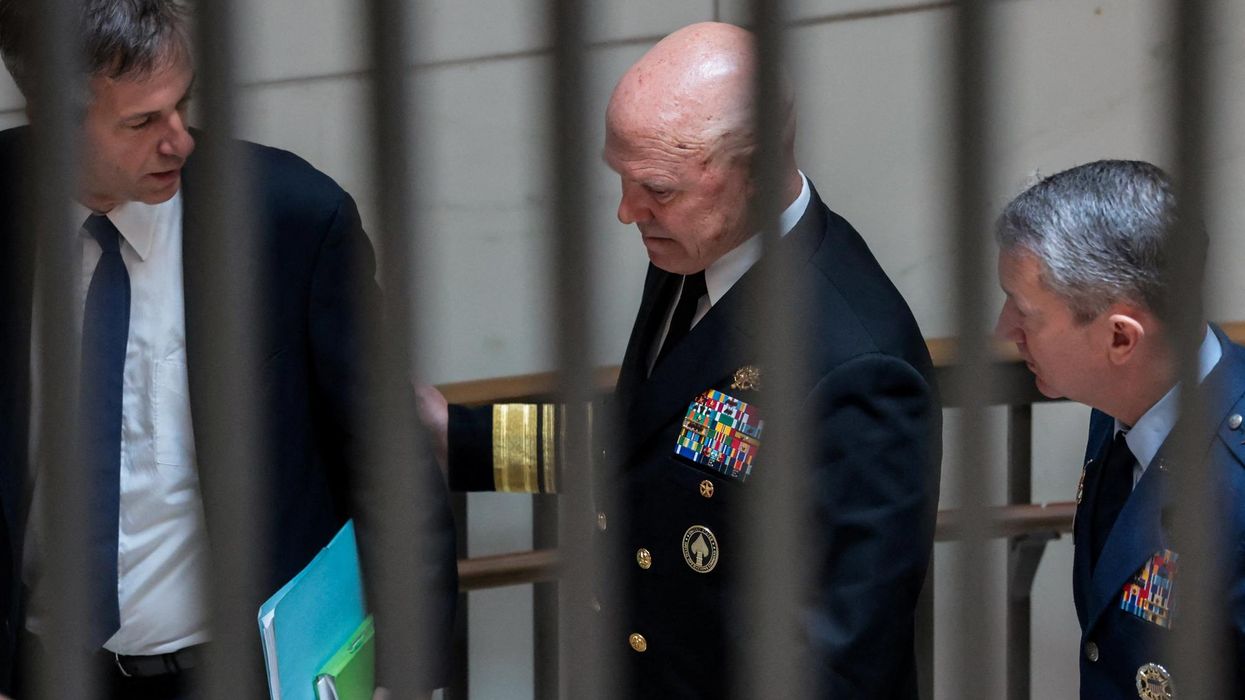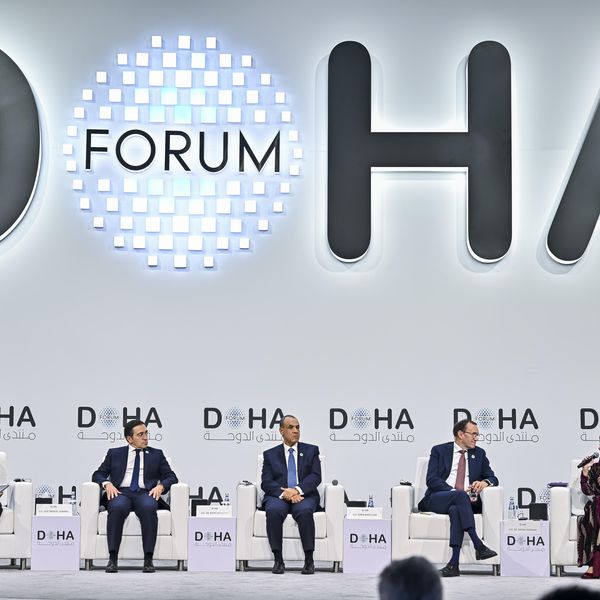To many in the U.S. foreign policy establishment, the images of chaos at Kabul airport last month appeared to vindicate an article of faith in Washington — when the U.S. leaves, chaos ensues.
But while all eyes were on Afghanistan, an arguably more consequential event occurred in Baghdad as a direct result of Washington’s military shift away from the Middle East: Saudi, Iranian and Emirati foreign ministers were coming together at a regional security summit hosted by the Iraqi government. Rather than chaos, the Baghdad summit provided a different message: As the U.S. steps back militarily, regional states are compelled to step forward diplomatically.
The untold story in the Middle East of the past few months is the dramatic increase in diplomatic activity between regional actors and initiated by the region’s own states. The United Arab Emirates and Turkey have sought to resolve their tensions, with Emirati National Security Adviser Tahnoon bin Zayed meeting with Turkish President Tayyip Erdogan in Ankara last month. The two powers have been at each other's throats in numerous theaters in the Middle East, including Libya, clinching the title of the region’s two most interventionist states for the past decade. Erdogan’s Turkey has been a key backer of the Muslim Brotherhood, which the Emiratis view as their primary ideological threat. And Turkey believes the UAE went for its jugular back in 2016, by supporting the failed military coup against Erdogan. Now they appear intent on reducing their political tensions by increasing economic collaboration.
Ankara has also sought to reduce tensions with Cairo, whose dictator, Gen. Abdel Fattah Sisi, overthrew the Brotherhood government of Mohamed Morsi in a coup in 2013. The Qataris, strong backers of Morsi, are also back on talking terms with the Egyptians while improving relations with Riyadh, which lifted its four-year-old blockade of Doha earlier this year. The Qataris are even engaged in a mild thaw with the Emiratis as suggested by last month’s meeting in Doha between Qatar’s Emir Sheikh Tamim Bin Hamad Al Thani and Tahnoon bin Zayed, the highest-level bilateral consultation between the two rivals since the blockade was launched in 2017. And just this week, Saudi Crown Prince Mohammed Bin Salman hosted Sheikh Tahnoon and the Qatari Emir at a Red Sea resort, where they posed for a relaxed, albeit awkward photo.
The Baghdad summit marked the culmination of a flurry of diplomatic activity of the past months aimed at laying the groundwork for a new regional security system. Iraqi President Barham Salih correctly blamed the sad state of the region’s security on the “collapse of its security and cooperation systems.” The summit was a breakthrough not so much for what was decided, but for the fact that it was held at all and for who attended: The foreign ministers of Iran, Saudi Arabia, the UAE, and Turkey, in addition to the heads of state of Egypt, Qatar, Kuwait, and Bahrain.
“The fact that we managed to bring rival countries together on the same table and initiate dialogue between them is not only important to them and us,” noted Iraqi Foreign Minister Fuad Hussein, “but to the whole region.”
French President Emmanuel Macron, who also attended the summit, called it “historic” while U.S. President Joe Biden issued a little-noticed congratulatory message to Baghdad for hosting a “ground-breaking regional summit.” The Biden administration has wisely adopted a low profile on Iraq’s facilitation of regional diplomacy, supporting it while resisting the temptation to impose itself. Given Washington’s decades-old role as the region’s dominant external player, not to mention the destabilizing effect of its 2003 invasion and occupation of Iraq, a more prominent American role may have made it impossible to convene such broad participation.
The most important diplomatic breakthrough-in-the-making is of course that between Saudi Arabia and Iran, the region’s two central antagonists. The Iraqis have been hosting secret high-level meetings between the two rivals since earlier this year, and senior Iranian, Saudi and Emirati leaders posed for photos together in Baghdad. (The Emir of Dubai Sheikh Mohammed bin Rashid Al Maktoum also held a bilateral meeting with Iran's new foreign minister, Hossein Amir-Abdollahian.)
What little coverage the Baghdad summit received tended to focus on Iraq’s newly won role as the region’s diplomatic hub, rather than the more important question of why this is all happening now. Indeed, how have the incentive structures of so many regional states suddenly changed in favor of diplomacy all at the same time?
The answer does not lie in conflict fatigue as it is unlikely that all players would suffer from such exhaustion roughly at the same time. Rather, the answer lies in the manner that Washington’s military withdrawal from the Middle East (few in the region are willing to bet that Afghanistan is a one-off) is impacting the cost-benefit analysis of all players when it comes to continuing their rivalries outside the realm of diplomacy.
As I wrote in Foreign Policy in April, it’s “not so much anything Washington has done but rather what Washington has stopped doing — namely, reassuring its security partners in the region that it will continue to support them unconditionally, no matter what reckless conduct they engage in. Washington’s turn away from entangling itself in the quarrels and stratagems of its Middle Eastern partners” has compelled the region’s powers to finally view diplomacy as their best option.
Diplomatic opportunities have been readily available to them all along. But as long as U.S. partners could rely on Washington to back them up and resolve their problems, diplomacy was perceived as suboptimal. For instance, the Saudi leadership preferred to have the United States militarily eliminate or contain, or politically isolate Riyadh’s adversaries, since negotiations with rivals such as Iran inevitably would lead to painful compromises the Saudi leadership much rather would avoid. As long as Washington’s regional partners enjoyed “an American option,” confrontation was deemed superior to diplomacy.
Though it is too early to say whether the Baghdad process will deliver, it is nonetheless appears to vindicate the forecasts of the Restraint grand strategy: Biden’s pending withdrawal from the region predictably unlocked an untapped potential for the Middle East actors to resolve their problems on their own and to try to build structures necessary to ensure a more peaceful and stable region. All that Washington needed to do was stop providing them with the option not to and get out of the way.
Similar developments may take place in Afghanistan as well. Beijing is calling for a four-nation meeting between Iran, Russia, Pakistan and China “to strengthen coordination to prevent chaos, curb terrorism and rebuild peace.” Only time will tell if these nations will succeed diplomatically where the U.S. failed militarily.
But one thing is clear: Diplomacy doesn’t make good TV. These stories will never get the same coverage as a horrific terrorist attack at a busy airport. But good visuals or not, these are the real consequences of the pending U.S. withdrawal. And they should be celebrated.
















